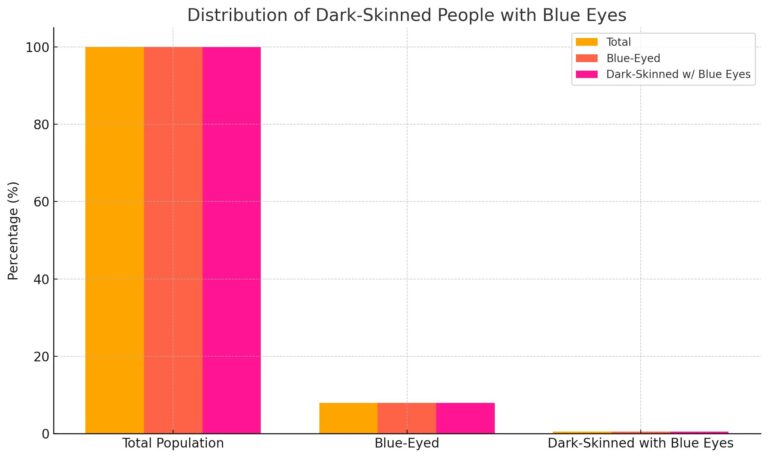The Science Behind Black People with Blue Eyes
The occurrence of blue eyes among Black individuals is an intriguing and rare phenomenon that has captivated scientists and the public alike. Traditionally, blue eyes are associated with populations of European descent, making their presence in individuals of African heritage particularly fascinating. This unique trait can be attributed to specific genetic factors and, in some cases, certain medical conditions.
Genetic Foundations of Blue Eyes
Eye color is primarily determined by the amount and distribution of melanin in the iris. Higher melanin levels result in darker eyes, while lower levels lead to lighter eye colors, such as blue. Research indicates that a mutation in the OCA2 gene, which influences melanin production, is responsible for blue eyes in humans. This mutation is believed to have originated in a single individual between 6,000 to 10,000 years ago near the Black Sea, suggesting that all blue-eyed individuals share a common ancestor.
Blue Eyes in Black Individuals
While the OCA2 gene mutation is prevalent among individuals of European descent, it is considerably rarer in those of African ancestry. However, due to the complex nature of human genetics and historical population movements, this mutation can occasionally appear in Black individuals, resulting in blue eyes. Additionally, genetic diversity within African populations may contribute to this rare trait.

Medical Conditions Influencing Eye Color
Beyond genetic mutations, certain medical conditions can lead to blue eyes in Black individuals:Waardenburg Syndrome: A genetic disorder characterized by hearing loss and pigmentation anomalies, including unusually light-colored eyes or heterochromia (two different colored eyes).
Ocular Albinism: A condition where melanin production in the eyes is reduced, leading to lighter eye colors. Unlike oculocutaneous albinism, ocular albinism primarily affects the eyes, with minimal impact on skin and hair pigmentation.

Historical Perspectives
Interestingly, genetic research suggests that some of the earliest inhabitants of regions like Ireland had dark skin and blue eyes. For instance, studies on ancient remains, such as those of „Cheddar Man,“ indicate that he likely had dark skin and blue eyes, highlighting the complex interplay of genetics in human history.
Conclusion
The presence of blue eyes in Black individuals underscores the intricate tapestry of human genetics. Whether arising from ancient genetic mutations, specific medical conditions, or the rich genetic diversity within populations, this rare trait serves as a testament to the complexity and beauty of human variation.
